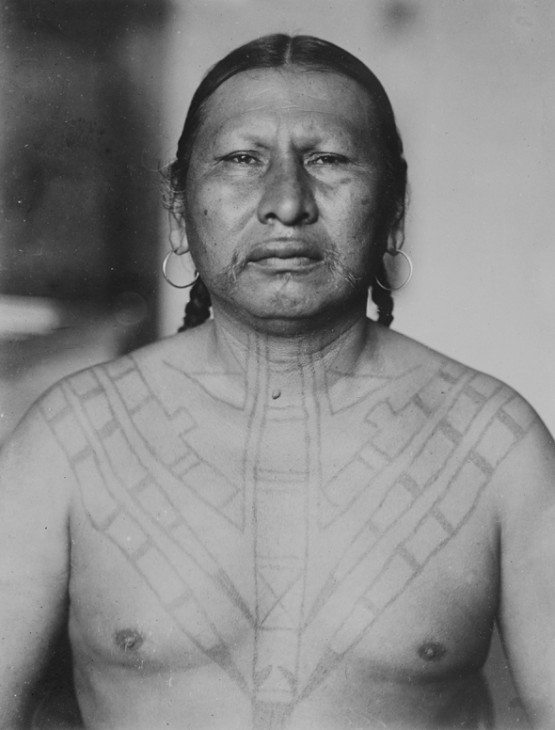Tattoo bundle unearthed in Williamson County, Tennessee (Aaron Deter-Wolf and Tanya M. Peres).
The world's oldest tattoo kit was discovered in Tennessee in 1985. It contained sharpened turkey bones and mussel shells with traces of red pigment. It’s estimated the kit was buried at least 3,600 years ago in a Late Archaic cemetery.
At the time of discovery, archeologist didn’t know the bundle, wrapped in animal skin, had anything to do with tattoo art. So the kit was boxed up and placed on a shelf in a presumably dusty and dank corner, for two decades.
But that all changed in 2007 when along came the research duo of Tennessee-based archaeologist Aaron Deter-Wolf and Florida State University zooarchaeologist Tanya Peres. (Zooarchaeology is the study of faunal remains.) After revisiting the artifacts, the pair recognized them as a sacred bundle used in indigenous rituals. In this case, the kit was soon suspected to be a tattoo bundle.
According to Hyperallergic, an art and culture publication based in Brooklyn, New York, the elements of the kit served as the following tools for a tattoo artist of the time:

The Osage priest Charley Wah-hre-she or Wax-rizhi bears tattoos once associated with war honors earned in battle. (Image: National Anthropological Archives, Smithsonian Institution)
The sharp bones recalled needles, while pigment residue on the shells suggested that they were used as ancient inkpots. Other turkey bones that were stained appeared to be tools for mixing pigment. The whole assortment had been placed in the grave beside its occupant, suggesting that it held significant value for that individual.
“These bundles were incredible important, only held and used by certain bundle keepers who were also tattooists,” Deter-Wolf told Hyperallergic. “There were oral histories, songs, and dances that went along with the tattooing process.”
From 2007, when Deter-Wolf and Peres first took the tattoo kit from its dusty shelf of two decades, until earlier this month when the two presented their latest research at the Society for American Archaeology’s 83rd Annual Meeting, the research involved laborious testing to concretely identify the tools.
According to Hyperallergic, “the process largely involved examining the tips of the turkey bone implements for their wear patterns. These microscopic marks can reveal what activity a tool was for, whether to weave cloth or baskets — or, perhaps, to poke the epidermis.”
After carbon dating testing was performed on the kit and once any potential offset in years was factored in, the team dated the tattoo kit's origin back to somewhere between 1,600 BCE and 3,200 BCE. That would make the toolkit 600 years older than ancient obsidian pieces that were directly identified as tattooing implements in 2016.
The tattoo kit was originally found during a bridge replacement job in Williamson County, Tenneesee. The bridge is built on a site known as Fernvale, a Native American settlement.






